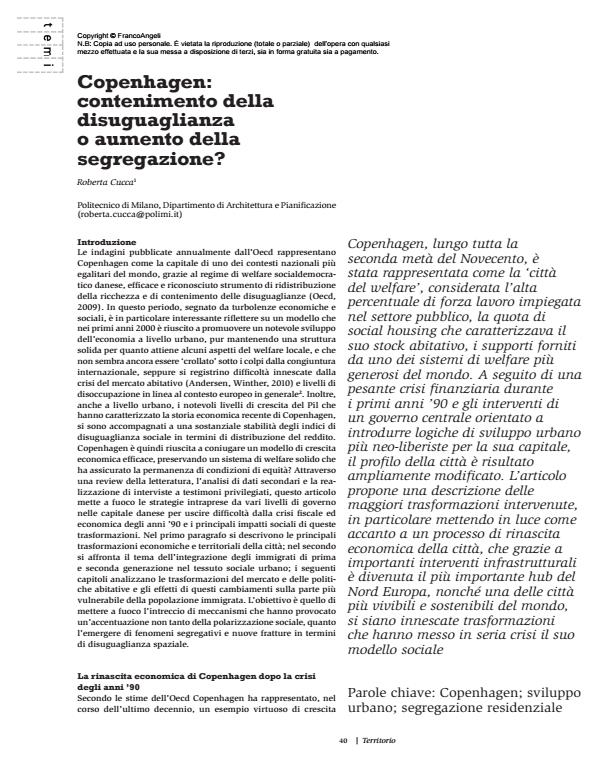Copenhagen: containment of inequality or increase in segregation?
Journal title TERRITORIO
Author/s Roberta Cucca
Publishing Year 2012 Issue 2012/61 Language Italian
Pages 7 P. 40-46 File size 1592 KB
DOI 10.3280/TR2012-061006
DOI is like a bar code for intellectual property: to have more infomation
click here
Below, you can see the article first page
If you want to buy this article in PDF format, you can do it, following the instructions to buy download credits

FrancoAngeli is member of Publishers International Linking Association, Inc (PILA), a not-for-profit association which run the CrossRef service enabling links to and from online scholarly content.
Throughout the second half of the 20th century, Copenhagen was represented as the ‘welfare city’, in consideration of the high percentage of the labour force employed in the public sector, the share of social housing that characterized its housing stock and the support furnished by one of the most generous welfare systems in the world. Following a substantial financial crisis in the early 1990s and action taken by a central government ori¬ented towards introducing a more neo-laissez-faire idea of urban development for its capital, the profile of the city was greatly modified. This paper describes the major transformations that have occurred, and in particular sheds light on how, alongside a process of economic rebirth of the city, which thanks to major infrastructural interventions became the most important hub in Northern Europe as well as one of the most liveable and sustain¬able cities in the world, transformations were begun that created a serious crisis for its social model.
Keywords: Copenhagen; urban development; residential segregation
Roberta Cucca, Copenhagen: contenimento della disuguaglianza o aumento della segregazione? in "TERRITORIO" 61/2012, pp 40-46, DOI: 10.3280/TR2012-061006